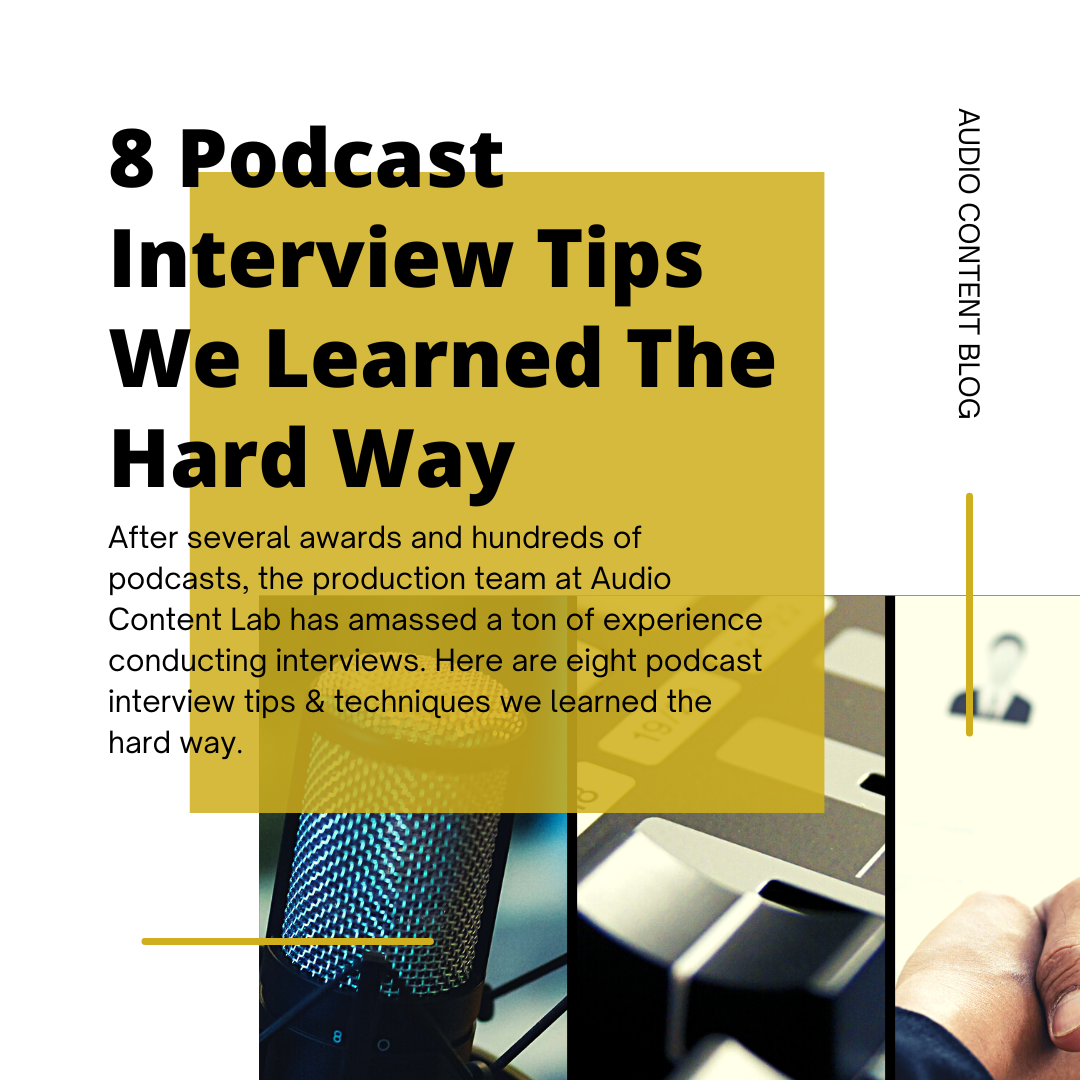At first blush, producing an interview-based podcast seems like a fairly straight forward effort, but there are so many small pivot points before, during, and after the record light goes off that can make or break a show. Here are eight podcast interview tips & techniques we learned the hard way.
Use the um’s and uh-huh during the interview but edit them out
While I’m recording an interview, I do a LOT of active listening cues, saying “hmmm” & “wow” & “right” to energize the convo – and when editing, I take almost *all of that out,* because the audience should have that space to react on their own. Now, in regards to the interviewees “umms” and “uhs”….
Don’t edit out all your guests ums and ahs – they are audio cues
One of the points of contention in the podcast producing space is editing, either too much, or too little, and the source of this is usually interviewee disfluency, the “uhs” “ums” and “ahs” that most people will fall into when they are preparing to respond, or thinking. Disfluency isn’t a bad thing, particularly in an interview. Disfluency is used in natural speech and serve as a call to attention. Our brains hear an “umm” and this heightens our engagement with the content. Within reason, your edits should only address the disfluencies that are significant. A podcast interview is supposed to sound like a conversation, not a lecture or a squeaky clean speech.
Use your pop screen to maintain consistent mic distance
Something that can snap an audience out of a podcast interview is volume inconsistency. Be sure your levels are high enough to capture the full sonic spectrum of you and your guest’s microphone. The best way to ensure this on your end is to use a pop-screen, which should be placed a 3-finger distance from the mic, and consistently talk with your lips pressed against it.
Take notes – be able to repeat / paraphrase (active listening)
Taking notes during an interview can be massively helpful in producing a worthy show. When you’re able to listen and take notes, you’re more likely to ingest the things being said, and will be able to reference them later in the interview, which shows the guest and the audience that you’re paying attention and actively participating. Good notes can also cut down the time it takes to create a showpage for the podcast.
Don’t ask the question if it’s already been answered
A lot of hosts will send questions to guests ahead of the recording fate so they can prepare, and sometimes this can create a scenario in which the guest will answer a few questions in a single response, nullifying the host’s original order of questions. Be sure to listen, really listen, as the guest answers questions to make sure you aren’t being redundant. The goal of the interview is to pull them into the conversation between the host and guest; duplicate answers and questions are a sign of disengagement and will cause listeners to tune out.
Compound questions are death! Ask one question at a time
Preparing and sharing a list of predetermined questions is a great way to ensure a smooth podcast interview, but if the questions asked are compound questions, in which several trains of thought need to be connected, it’s best to isolate the pieces and break them into more smaller questions, giving the guest (and audience) time to think and ingest/address the points one-by-one.
Be active with your mute button
Editing a podcast interview can be a bear for many of the reasons stated above. Chief among them is taking out the things which disengage the audience. This is why being active with your mute button can help breathe space into the final product, and cut down on edits.
Use music beds to que listeners towards transitions
The way people engage with a podcast isn’t just about the audio coming from guests and interviewers, it’s the entire sonic salad they’re served from the beginning of an episode to the end. Music cues are a great tool to sign-post transitions to an audience. Music laid under speech can also heighten the drama of an answer, so be sure to choose your music beds wisely and match them with the tone and tenor of the interview.

